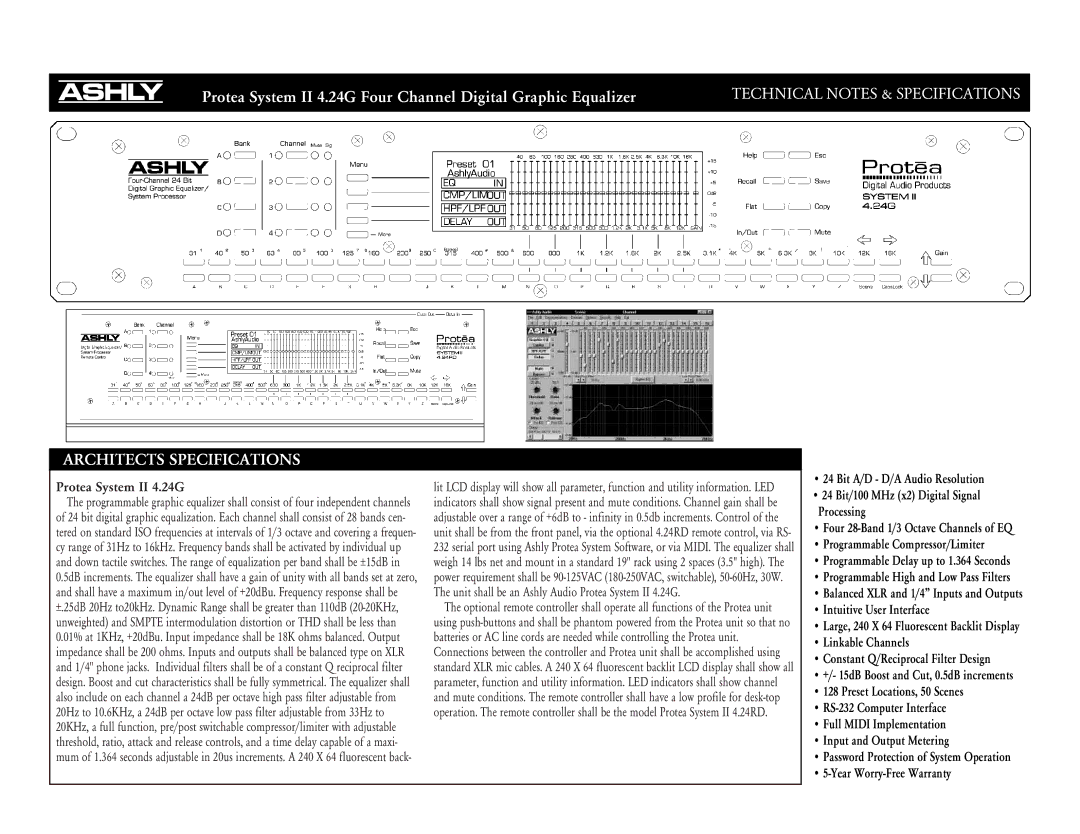II 4.24G specifications
Ashly II 4.24G is a powerful audio processing tool designed for professionals within the live sound, recording, and installation environments. This versatile digital audio processor is part of the Ashly product line, renowned for delivering high-quality sound reinforcement solutions.One of the main features of the Ashly II 4.24G is its comprehensive processing capabilities. It boasts four input channels, each equipped with a plethora of adjustable parameters. Users can access advanced equalization options, such as 10-band graphic EQ and parametric EQ, providing precise control over frequency response. Additionally, the unit allows for dynamic processing including compression, limiting, and expansion, ensuring that sound levels are balanced and consistent.
The Ashly II 4.24G utilizes state-of-the-art digital signal processing (DSP) technology. This ensures low latency and high fidelity, essential for live performances where timing and clarity are critical. The unit supports 24-bit resolution and a sampling rate of up to 96 kHz, facilitating pristine audio quality while minimizing signal degradation.
One of the standout characteristics of the Ashly II 4.24G is its user-friendly interface. It features a bright, easy-to-read LCD screen, combined with intuitive navigation buttons that allow for quick adjustments in various settings. The device also supports remote control via Ashly's dedicated software, enabling users to manage the system from their laptops or tablets, significantly enhancing flexibility during setups and performances.
In terms of connectivity, the Ashly II 4.24G offers a range of options. It features both analog and digital input and output connections, allowing for seamless integration into diverse audio systems. Networking capabilities also allow for multiple units to be interconnected, providing a scalable solution for larger setups.
Durability is another important aspect of the Ashly II 4.24G. Built with a rugged metal chassis, this device is designed to withstand the rigors of travel and stage use, ensuring long-term reliability. Additionally, the device is equipped with internal power supplies, further reducing the potential for failure during performances.
In conclusion, the Ashly II 4.24G combines advanced DSP technology, user-friendly design, and robust construction, making it a preferred choice for audio professionals looking for a reliable and high-performance audio processing unit.

